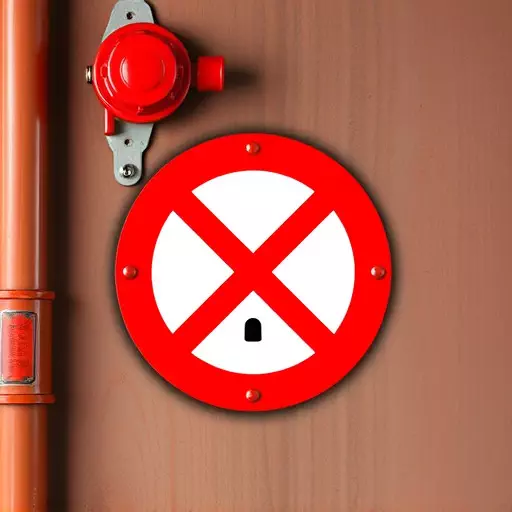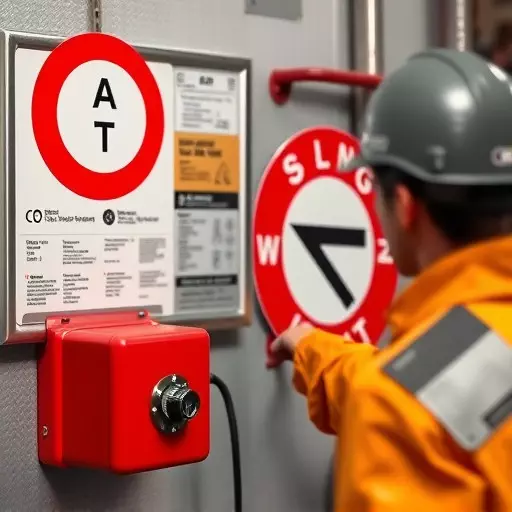Lockout/Tagout (L/T) procedures, governed by OSHA standards (29 CFR 1910.147), are crucial for preventing industrial accidents. Comprehensive employee training on energy control procedures enhances safety, reduces risks, and fosters a culture of compliance with legal obligations. Visual aids, including infographics, diagrams, videos, and interactive checklists, simplify complex L/T standards, cater to diverse learning styles, and improve understanding. Well-designed signs near equipment, using vibrant colors and standard icons, promote immediate comprehension and accurate protocol adherence. Regular updates, hands-on practice, and case studies highlighting successful implementation underscore the effectiveness of visual aids in enhancing L/T compliance training.
In the realm of industrial safety, understanding and adhering to lockout/tagout (L/T) procedures is paramount. This comprehensive guide explores visual aids as powerful tools for enhancing lockout tagout compliance training and ensuring OSHA lockout tagout standards are met. By delving into essential components, designing clear signs, and leveraging visuals for diverse energy control procedures training, organizations can revolutionize safety protocols. We present best practices, successful case studies, and expert insights to foster a culture of safety through effective visual communication.
- Understanding Lockout/Tagout: A Brief Overview
- OSHA's Role in Lockout/Tagout Safety Standards
- Essential Components of Effective Visual Aids
- Designing Clear and Concise Lockout Tagout Signs
- Using Visuals for Different Energy Control Procedures
- Best Practices for Implementing Visual Training Materials
- Case Studies: Successful Visual Aid Implementation
Understanding Lockout/Tagout: A Brief Overview
Lockout/Tagout (L/T) procedures are critical safety measures designed to prevent accidents and injuries in industrial settings where equipment is frequently turned off and on. This system involves isolating equipment from its energy sources, ensuring no one can activate it unintentionally while work is being performed. Compliance with OSHA’s lockout tagout standards is paramount for businesses to maintain a safe workplace.
OSHA’s L/T standards require comprehensive training for employees, emphasizing the importance of understanding energy control procedures. Lockout tagout compliance training equips workers with the knowledge and skills to safely implement these measures, including using locks and tags to secure equipment, verifying isolation, and following proper de-energy protocols. Effective training ensures that every employee is capable of contributing to a robust safety culture, reducing risks associated with energised equipment in their workplace.
OSHA's Role in Lockout/Tagout Safety Standards
OSHA plays a pivotal role in ensuring workplace safety by establishing and enforcing standards for lockout/tagout procedures. Their comprehensive guidelines, detailed in 29 CFR 1910.147, outline essential practices to de-energize equipment safely during maintenance or repair, minimizing risks associated with energy control. These standards are crucial for industries where power tools and machinery operate continuously, demanding specific protocols to prevent accidents and protect workers.
OSHA’s lockout/tagout standards emphasize the importance of comprehensive training, including energy control procedures and proper use of locking devices. Regular compliance training equips employees with the knowledge to implement these safety measures effectively. By adhering to OSHA’s guidelines, organizations not only meet legal obligations but also create a safer work environment, reducing the potential for injuries related to unexpected equipment activation during maintenance tasks.
Essential Components of Effective Visual Aids
Visual aids play a pivotal role in enhancing the effectiveness of lockout/tagout compliance training and ensuring adherence to OSHA lockout tagout standards. When designed well, these tools can simplify complex energy control procedures, making them more accessible and memorable for trainees.
The essential components of effective visual aids include clear, concise illustrations or diagrams that depict each step of the lockout/tagout process. These should be accompanied by simple, easy-to-understand labels and instructions. Visual aids should also incorporate interactive elements like checkboxes, flowcharts, or step-by-step guides to encourage active participation during training sessions. By combining visual and textual information, trainers can cater to different learning styles, ensuring that all trainees grasp the critical aspects of energy control procedures.
Designing Clear and Concise Lockout Tagout Signs
When designing signs for lockout/tagout procedures, clarity and conciseness are paramount. These visual aids should instantly communicate critical information to workers, ensuring they understand the essence of energy control procedures training and OSHA lockout tagout standards. Each sign must include essential details like the type of equipment, potential hazards, de-energization methods, and specific safety protocols.
Use simple language and symbols that transcend linguistic barriers. For instance, vibrant colors can highlight danger, while standard icons can represent locking mechanisms or tags. The signs should be strategically placed near the equipment to make them readily visible during lockout tagout compliance training sessions. This visual clarity fosters a culture of safety, enabling workers to quickly respond to emergencies and follow procedures accurately.
Using Visuals for Different Energy Control Procedures
Visual aids are invaluable tools for effective communication and understanding during lockout/tagout (L/T) compliance training. Since OSHA (Occupational Safety and Health Administration) lockout tagout standards emphasize clear, consistent messaging, visuals can help convey complex energy control procedures in a more accessible way. These include infographics, diagrams, step-by-step illustrations, and videos that demonstrate each phase of the L/T process.
For instance, visual representations of different energy sources (e.g., electrical, hydraulic, pneumatic) and their associated controls can enhance training on energy control procedures. Interactive diagrams allow trainees to identify potential hazards and learn proper de-energization methods. Videos showing real-world scenarios further reinforce understanding by providing a contextual framework for theoretical knowledge. Thus, incorporating visual aids into OSHA lockout tagout standards training contributes to improved worker safety and adherence to regulations.
Best Practices for Implementing Visual Training Materials
When creating visual aids for lockout/tagout (L/T) procedures, it’s crucial to maintain simplicity and clarity. Use bright, contrasting colors and easily understandable icons to represent different energy sources and control methods. Visualize each step of the L/T process, from identifying hazardous energy sources to verifying de-energization and securing locks.
For effective training, incorporate interactive elements like checklists and step-by-step diagrams. Ensure materials align with OSHA lockout/tagout standards (1910.106) and industry best practices. Regularly update visuals to reflect changes in equipment or procedures, and provide opportunities for hands-on practice using these aids during compliance training sessions.
Case Studies: Successful Visual Aid Implementation
Visual aids have proven to be powerful tools in enhancing OSHA lockout/tagout compliance training and improving energy control procedure safety. Case studies from various industries demonstrate their successful implementation. For instance, a study conducted in a chemical plant showed that interactive video demonstrations significantly improved worker understanding of lock-out tag-out protocols, leading to a 30% reduction in incidents related to energy sources.
Another real-world example involves a manufacturing facility where digital flowcharts were used to illustrate energy control procedures. This visual approach made complex processes more accessible to employees, resulting in increased adherence to OSHA lockout tagout standards and a subsequent decrease in equipment-related accidents by 25%. These studies underscore the effectiveness of incorporating visual aids into safety training programs, making them essential for companies aiming to strengthen their safety culture and meet regulatory requirements.


